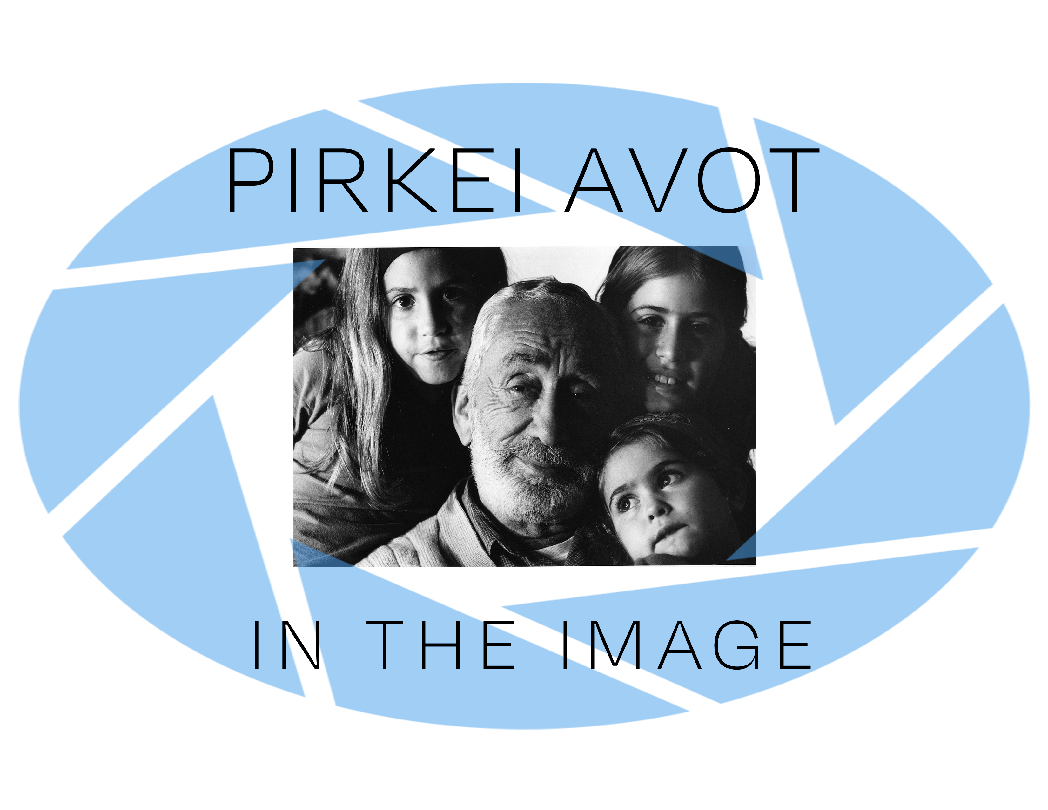
Rite of Passage, Rehovot, Israel, 1982 © Zion Ozeri
1) How do you interpret this photograph?
2) What might be the relationship between the man and the boy in this photograph? What evidence can you see in the photograph to support your answer?
3) What other title and caption or midrash might you suggest for this image?
Pirkei Avot is a Mishnaic tractate focused on moral and ethical teachings. It stands out from the rest of the Mishnah, which is largely a legal work, and is full of the wisdom of the sages, passed down from one generation to another. Below is the first section, or Mishnah:
Understanding
1) The first part of this Mishnah explains the way that Torah has been passed down through the generations. Moses received the Torah originally at Sinai, and it was passed down from teacher to student. How might a story change when it is transmitted from one person to another, over the course of many years?
2) In the Jewish tradition, the revelation at Sinai gave us rules for life, which are meant to be eternal. We retell ancient stories and recall these traditions, but our own lives may give us new stories. How and why might we decide to add new rules or traditions?
3) The Mishnah then tells us that the Men of the Great Assembly, the final recipients of Torah in this short retelling, gave three instructions. What do these instructions have in common with one another?
4) In what ways do you see aspects of this text reflected in the image? What does the image evoke for you that isn't echoed by the Mishnah?
Reflecting
Help build a digital scrapbook by adding your own image or Midrash, with a caption, here, in response to these questions:
1) What does it look like to receive or transmit a story? What is the technology for transmission - is it through conversations, writing, or other media?
2) What is one instruction or family story that has been passed down to you, or that you hope to pass on to others?





